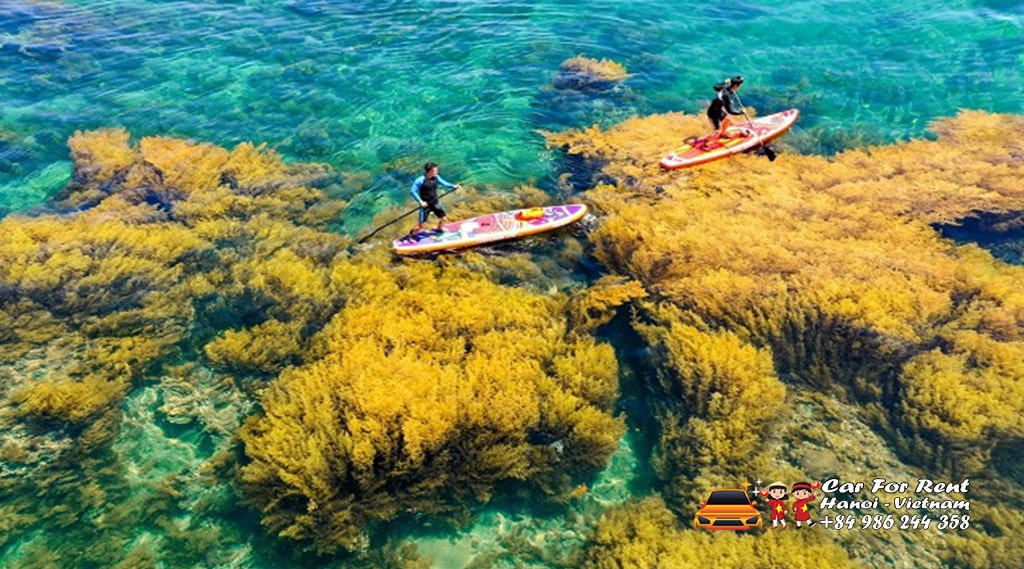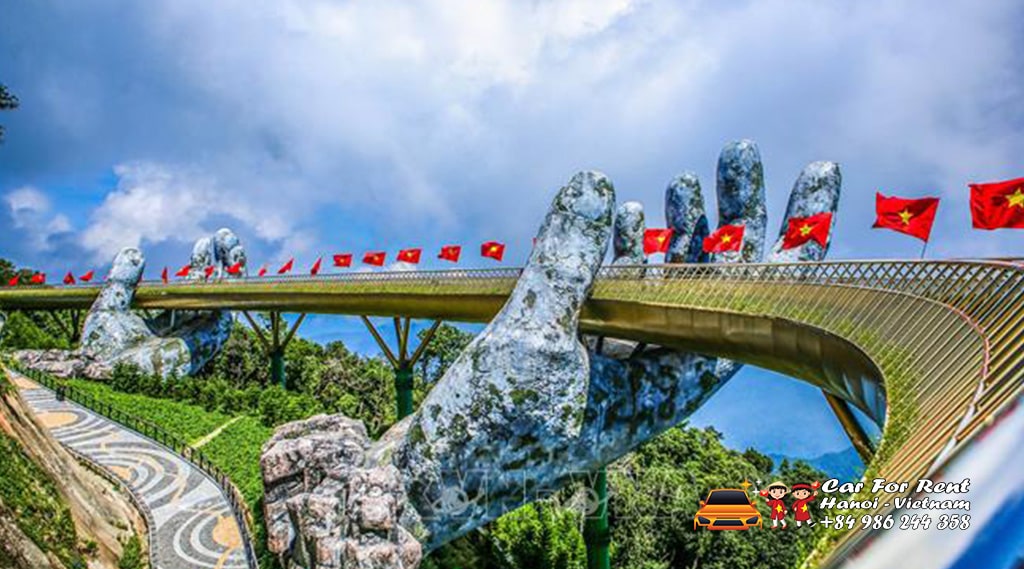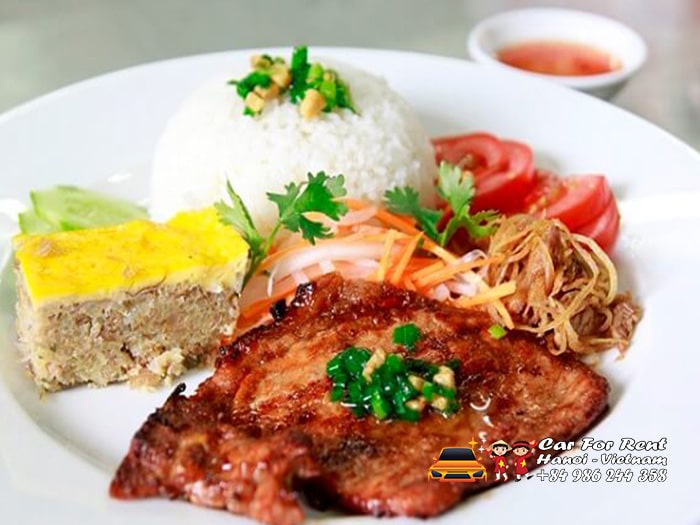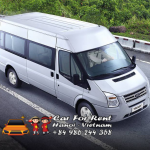vietnam travel itinerary Vietnam is a country of amazing diversity, beauty, and culture. From the bustling cities to the serene countryside, from the majestic mountains to the stunning coastlines, from the ancient temples to the modern skyscrapers, there is something for everyone in this Southeast Asian gem. Whether you are looking for adventure, relaxation, history, or cuisine, you will find it in Vietnam.
But how do you plan your trip to Vietnam? How do you choose where to go and what to see in this vast and varied country? How do you make the most of your time and money in Vietnam?
In this blog post, we will help you answer these questions and more. We will provide you with a sample 2-week itinerary that covers some of the best destinations and experiences in Vietnam. We will also give you some tips and advice on how to customize your itinerary according to your preferences and budget. vietnam travel itinerary
Of course, this is not the only way to travel in Vietnam. There are many other possible routes and options that you can explore and enjoy. But we hope that this itinerary will give you a good idea of what Vietnam has to offer and inspire you to plan your own trip.
Day 1: Arrive in Hanoi
Hanoi is the capital and the cultural heart of Vietnam. It’s a city of contrasts, where the old and the new coexist in harmony. It’s a city of history, where you can learn about the country’s past and present. It’s a city of charm, where you can experience the vibrant street life and the friendly people. vietnam travel itinerary

Your first day in Hanoi is a good time to get acquainted with the city and its atmosphere. You can start by exploring the Old Quarter, the historic and lively center of Hanoi. Here, you can wander through the narrow streets lined with shops, cafes, restaurants, and temples. You can also visit some of the attractions in the area, such as the Hoan Kiem Lake, the Ngoc Son Temple, the Dong Xuan Market, and the Bach Ma Temple. vietnam travel itinerary
In the evening, you can enjoy a traditional water puppet show at the Thang Long Water Puppet Theatre or watch a live performance at the Hanoi Opera House. You can also sample some of the local delicacies at one of the many street food stalls or restaurants in the Old Quarter. vietnam travel itinerary
Day 2: Explore Hanoi
Your second day in Hanoi is a good time to visit some of the other landmarks and museums in the city. You can start by visiting the Ho Chi Minh Mausoleum Complex, where you can see the final resting place of Vietnam’s revered leader and father of independence. You can also visit some of the other sites in the complex, such as the Ho Chi Minh Museum, the One Pillar Pagoda, and the Presidential Palace. vietnam travel itinerary
Next, you can head to the Temple of Literature, which is Vietnam’s oldest university and a symbol of education and culture. Here, you can admire the architecture and gardens of this ancient Confucian temple and learn about its history and significance.
After that, you can visit the Vietnam Museum of Ethnology, which showcases the diversity and richness of Vietnam’s 54 ethnic groups. Here, you can see exhibits of costumes, artifacts, musical instruments, and houses from different regions and cultures of Vietnam. vietnam travel itinerary

In the afternoon, you can visit the Imperial Citadel of Thang Long, which was once the political and military center of Vietnam for over a thousand years. Here, you can explore the ruins and relics of this UNESCO World Heritage Site and learn about its history and importance.
In the evening, you can enjoy a nightlife experience in Hanoi, which offers a variety of options, such as bars, clubs, pubs, or karaoke. You can also try some of the local beers, such as Bia Hoi or Bia Saigon, which are cheap and refreshing. vietnam travel itinerary
Day 3: Hanoi to Halong Bay
Halong Bay is one of the most iconic and beautiful destinations in Vietnam. It’s a UNESCO World Heritage Site that features thousands of limestone islands and islets rising from the emerald waters of the Gulf of Tonkin. It’s a place of natural wonder, where you can marvel at the scenery, explore the caves, kayak among the rocks, or relax on the beaches. vietnam travel itinerary
The best way to experience Halong Bay is by taking a cruise that will take you around the bay and let you stay overnight on board. There are many cruise options available, from budget to luxury, from traditional to modern, from group to private. You can choose the one that suits your style and budget.
The cruise usually starts from Hanoi, where you will be picked up by a shuttle bus or a private car and driven to Halong City, which takes about four hours. From there, you will board your cruise ship and start your journey around the bay. You will have lunch and dinner on board, as well as activities such as swimming, kayaking, fishing, or visiting caves or floating villages. You will also enjoy the sunset and sunrise views from the deck or your cabin. vietnam travel itinerary

Day 4: Halong Bay to Hanoi
Your second day on the cruise will be similar to the first one, with more sightseeing and activities around the bay. You will have breakfast and lunch on board, as well as some free time to relax or join optional excursions. You will also have a cooking demonstration or a tai chi session on board. vietnam travel itinerary
In the afternoon, you will return to Halong City and disembark from your cruise ship. You will then be driven back to Hanoi by shuttle bus or private car, which takes about four hours. You will arrive in Hanoi in the evening and check into your hotel.
Day 5: Hanoi to Hue
Hue is the former imperial capital of Vietnam and a UNESCO World Heritage Site. It’s a city of history, culture, and architecture. It’s home to many monuments and attractions that reflect the glory and legacy of the Nguyen Dynasty, the last royal family of Vietnam. It’s also a city of charm, where you can experience the peaceful and poetic atmosphere of the Perfume River and the countryside. vietnam travel itinerary
The fastest way to travel from Hanoi to Hue is by taking a flight, which takes about an hour. You can also take a train or a bus, which takes about 12 to 14 hours. You can choose the option that suits your time and budget.
Once you arrive in Hue, you can check into your hotel and start exploring the city. You can start by visiting the Citadel, which is the most famous landmark of Hue. The Citadel is a complex of palaces, temples, walls, gates, and gardens that served as the residence and administrative center of the Nguyen emperors. Here, you can admire the architecture and decoration of this ancient fortress and learn about its history and significance. vietnam travel itinerary

Next, you can visit some of the Tombs of the Emperors, which are scattered along the banks of the Perfume River. These are the mausoleums of the Nguyen emperors, who built them according to their own designs and preferences. Each tomb has its own style and character, reflecting the personality and achievements of its owner. Some of the most famous tombs are those of Minh Mang, Tu Duc, and Khai Dinh.
In the evening, you can enjoy a boat ride along the Perfume River, which offers a romantic and relaxing way to see the city. You can also watch a traditional music and dance performance on board, or visit some of the pagodas and temples along the river, such as Thien Mu Pagoda or Dieu De Pagoda. vietnam travel itinerary
Day 6: Hue to Hoi An
Hoi An is a charming and colorful town in central Vietnam. It’s a UNESCO World Heritage Site that preserves the architecture and culture of a former trading port that flourished from the 15th to the 19th centuries. It’s a place of beauty, where you can admire the old houses, lanterns, bridges, and canals that create a picturesque and nostalgic atmosphere. It’s also a place of fun, where you can enjoy the beach, the nightlife, the shopping, and the cuisine. vietnam travel itinerary
The best way to travel from Hue to Hoi An is by taking a private car or a bus that follows the scenic route along the coast of central Vietnam. This route will take you through some of the most beautiful and interesting places in the region, such as Lang Co Beach, Hai Van Pass, Da Nang City, and Marble Mountains. You can stop at these places and enjoy the views and attractions along the way. The journey takes about four to six hours, depending on how long you spend at each stop.
Once you arrive in Hoi An, you can check into your hotel and start exploring the town. You can start by visiting the Ancient Town, which is the historic and cultural center of Hoi An. Here, you can wander through the narrow streets lined with old houses, shops, cafes, and temples. You can also visit some of the attractions in the area, such as the Japanese Covered Bridge, the Phuc Kien Assembly Hall, the Tan Ky House, and the Museum of Trade Ceramics. vietnam travel itinerary
In the evening, you can enjoy the nightlife and the lantern festival in Hoi An, which happens on every full moon night. You can see the town lit up by thousands of colorful lanterns, which create a magical and festive atmosphere. You can also join in the fun by releasing your own lanterns into the river, or by taking part in some of the games and activities on the streets. You can also sample some of the local delicacies at one of the many street food stalls or restaurants in the town.

Day 7: Hoi An
Your second day in Hoi An is a good time to enjoy some of the other activities and attractions that the town has to offer. You can choose from a variety of options, such as:
- Visit the beach. Hoi An has two main beaches, An Bang and Cua Dai, which are both about 5 km away from the town center. You can take a taxi, a bike, or a shuttle bus to get there. The beaches are clean and sandy, and offer a relaxing and refreshing escape from the heat and the crowds. You can also enjoy some water sports, such as surfing, kite surfing, or sailing, or join a boat tour to the nearby Cham Islands, which are a marine park and a biosphere reserve. vietnam travel itinerary
- Take a cooking class. Hoi An is known for its delicious and diverse cuisine, which reflects its multicultural and historical influences. You can learn how to make some of the local specialties, such as cao lau, banh xeo, or mi quang, by taking a cooking class at one of the many cooking schools or restaurants in the town. You can also visit a local market or a farm to buy fresh ingredients and learn about the local produce and spices.
- Get a tailor-made outfit. Hoi An is also famous for its tailoring industry, which offers high-quality and affordable custom-made clothing and accessories. You can choose from a wide range of fabrics, styles, and designs, and get measured and fitted by a professional tailor. You can also get your outfit delivered to your hotel within 24 hours or less. You can find many tailors in the Ancient Town or along the main roads of Hoi An. vietnam travel itinerary
- Explore the countryside. Hoi An is surrounded by beautiful and peaceful countryside, where you can see rice fields, water buffaloes, coconut palms, and fishing villages. You can explore the countryside by bike, by motorbike, by car, or by boat. You can also join a guided tour that will take you to some of the rural attractions and activities, such as visiting a pottery village, a silk village, or an organic farm, or taking part in a lantern making workshop or a fishing experience.

Day 8: Hoi An to Nha Trang
Nha Trang is a coastal city in south-central Vietnam. It’s a popular tourist destination that offers a lively and modern vibe. It’s famous for its sandy beaches, crystal-clear waters, and coral reefs. It’s also a great place for water sports, such as diving, snorkeling, or parasailing. It’s also a place of culture, where you can visit some of the temples, museums, and markets in the city. vietnam travel itinerary
The fastest way to travel from Hoi An to Nha Trang is by taking a flight, which takes about an hour. You can also take a train or a bus, which takes about 10 to 12 hours. You can choose the option that suits your time and budget.
Once you arrive in Nha Trang, you can check into your hotel and start enjoying the beach and the sun. You can also visit some of the attractions in the city, such as the Po Nagar Cham Towers, the Long Son Pagoda, the Nha Trang Cathedral, or the Alexandre Yersin Museum.
In the evening, you can enjoy the nightlife and the entertainment in Nha Trang, which offers a variety of options, such as bars, clubs, pubs, or casinos. You can also try some of the seafood dishes at one of the many restaurants or street food stalls in the city. vietnam travel itinerary
Day 9: Nha Trang
Your second day in Nha Trang is a good time to enjoy some of the water activities and attractions that the city has to offer. You can choose from a variety of options, such as:
- Take a boat tour to the islands. Nha Trang has many islands and islets that are ideal for snorkeling, diving, or relaxing. You can take a boat tour that will take you to some of the most popular islands, such as Hon Mun, Hon Tam, Hon Tre, or Hon Mieu. You can also join a fishing tour or a floating bar tour that will add some fun and excitement to your trip. vietnam travel itinerary
- Visit the Vinpearl Land. Vinpearl Land is a large amusement park and resort that is located on Hon Tre Island. You can take a cable car or a speedboat to get there. Vinpearl Land offers many attractions and activities for all ages and tastes, such as roller coasters, water slides, aquariums, zoos, cinemas, or golf courses. You can also enjoy some shows and performances at the amphitheater or the water music stage. vietnam travel itinerary
- Visit the Thap Ba Hot Springs. Thap Ba Hot Springs is a natural spa and wellness center that is located about 4 km away from the city center. Here, you can relax and rejuvenate your body and mind by soaking in the mineral-rich hot springs, mud baths, or herbal baths. You can also enjoy some massages, facials, or other treatments at the spa. vietnam travel itinerary
- Visit the Ba Ho Waterfalls. Ba Ho Waterfalls is a natural attraction that is located about 25 km away from the city center. Here, you can hike through the forest and see three cascading waterfalls that form natural pools. You can also swim, jump, or slide into the cool and clear water, or picnic on the rocks.

Day 10: Nha Trang to Da Lat
Da Lat is a hill town in the central highlands of Vietnam. It’s a popular tourist destination that offers a cool and refreshing climate. It’s famous for its flowers, fruits, and vegetables. It’s also a place of romance, where you can see many French-style villas, gardens, and lakes. It’s also a place of adventure, where you can enjoy some outdoor activities, such as trekking, cycling, or canyoning. vietnam travel itinerary
The best way to travel from Nha Trang to Da Lat is by taking a bus, which takes about four hours. You can also take a private car or a taxi, which takes about three hours. You can choose the option that suits your comfort and budget.
Once you arrive in Da Lat, you can check into your hotel and start exploring the town. You can start by visiting the Da Lat Flower Garden, which is one of the most beautiful and colorful attractions in Da Lat. Here, you can see hundreds of varieties of flowers, such as roses, orchids, daisies, or sunflowers. You can also visit some of the other attractions in the area, such as the Xuan Huong Lake, the Bao Dai Palace, or the Lam Ty Ni Pagoda.
In the evening, you can enjoy the nightlife and the shopping in Da Lat, which offers a variety of options, such as cafes, bars, night markets, or souvenir shops. You can also try some of the local specialties at one of the many restaurants or street food stalls in the town. vietnam travel itinerary
Day 11: Da Lat
Your second day in Da Lat is a good time to enjoy some of the outdoor activities and attractions that the town has to offer. You can choose from a variety of options, such as:
- Take a cable car to the Truc Lam Monastery. Truc Lam Monastery is a Zen Buddhist temple that is located on a hill overlooking the Tuyen Lam Lake. You can take a cable car from the town center to get there, which offers a scenic and thrilling ride. At the monastery, you can admire the architecture and gardens of this peaceful and serene place. You can also join a meditation session or a tea ceremony with the monks. vietnam travel itinerary
- Visit the Datanla Waterfall. Datanla Waterfall is a natural attraction that is located about 6 km away from the town center. Here, you can see a spectacular waterfall that plunges into a deep pool. You can also enjoy some adventure activities, such as ziplining, roller coaster, or abseiling, that will take you closer to the waterfall and give you an adrenaline rush. vietnam travel itinerary
- Visit the Crazy House. Crazy House is an unconventional and whimsical guesthouse that is designed by a local architect. It’s inspired by nature and fairy tales, and features organic shapes, animal motifs, and colorful details. It’s also open to visitors who want to see its unique and creative rooms and structures. You can also stay overnight at the Crazy House if you want to have a memorable and quirky experience. vietnam travel itinerary
- Visit the Valley of Love. Valley of Love is a romantic and picturesque park that is located about 5 km away from the town center. Here, you can see many flowers, trees, lakes, and bridges that create a lovely and charming atmosphere. You can also enjoy some activities, such as boating, horse riding, or cycling, that will make your visit more fun and enjoyable. vietnam travel itinerary
Day 12: Da Lat to Ho Chi Minh City
Ho Chi Minh City is the largest and most dynamic city in Vietnam. It’s a city of contrasts, where the traditional and the modern coexist in harmony. It’s a city of history, where you can learn about the country’s past and present. It’s a city of energy, where you can experience the vibrant street life and the friendly people. vietnam travel itinerary
The fastest way to travel from Da Lat to Ho Chi Minh City is by taking a flight, which takes about an hour. You can also take a bus, which takes about seven hours. You can choose the option that suits your time and budget. vietnam travel itinerary
Once you arrive in Ho Chi Minh City, you can check into your hotel and start exploring the city. You can start by visiting the War Remnants Museum, which is one of the most sobering and impactful attractions in Ho Chi Minh City. Here, you can see exhibits of photos, artifacts, and vehicles that document the horrors and effects of the Vietnam War. You can also visit some of the other attractions in the area, such as the Reunification Palace, the Notre Dame Cathedral, or the Central Post Office. vietnam travel itinerary
In the evening, you can enjoy the nightlife and the entertainment in Ho Chi Minh City, which offers a variety of options, such as bars, clubs, pubs, or theaters. You can also sample some of the local delicacies at one of the many street food stalls or restaurants in the city. vietnam travel itinerary
Day 13: Ho Chi Minh City to Mekong Delta
Mekong Delta is a region in southern Vietnam that is known as the “rice bowl” of the country. It’s a place of natural beauty, where you can see the lush and fertile landscapes of the Mekong River and its tributaries. It’s also a place of culture, where you can see the rural and traditional lifestyles of the local people. vietnam travel itinerary
The best way to experience the Mekong Delta is by taking a day trip or a tour that will take you to some of the most interesting and authentic places in the region. You can choose from different options, such as:
- Visit the Cai Be Floating Market. Cai Be Floating Market is one of the largest and most colorful floating markets in the Mekong Delta. Here, you can see hundreds of boats selling and buying fruits, vegetables, fish, and other goods on the water. You can also join a boat tour that will take you around the market and let you sample some of the local products. vietnam travel itinerary
- Visit the Vinh Trang Pagoda. Vinh Trang Pagoda is a Buddhist temple that is located in My Tho City. It’s one of the most beautiful and impressive pagodas in the Mekong Delta. It features a mix of Vietnamese, Chinese, and Cambodian architectural styles, and has many statues and gardens that adorn its grounds. You can also see some of the monks and nuns who live and practice at the pagoda. vietnam travel itinerary
- Visit the Ben Tre Coconut Village. Ben Tre Coconut Village is a place where you can see how the local people use coconuts for various purposes, such as food, drink, oil, or handicrafts. You can also enjoy some activities, such as riding a bike, a horse cart, or a sampan boat, that will take you through the coconut plantations and villages. You can also visit a coconut candy factory or a honey bee farm and taste some of their products. vietnam travel itinerary
- Visit the Can Tho City. Can Tho City is the largest and most modern city in the Mekong Delta. It’s also a cultural and economic center of the region. Here, you can visit some of the attractions, such as the Ninh Kieu Pier, the Ong Pagoda, or the Binh Thuy Ancient House. You can also visit another floating market, such as Cai Rang or Phong Dien, which are located near Can Tho. vietnam travel itinerary
Day 14: Ho Chi Minh City to Cu Chi Tunnels vietnam travel itinerary
Cu Chi Tunnels is a historical and military site that is located about 70 km away from Ho Chi Minh City. It’s a network of underground tunnels that were used by the Viet Cong guerrillas during the Vietnam War. It’s a place of courage, ingenuity, and resilience, where you can see how the guerrillas lived, fought, and survived in the tunnels. vietnam travel itinerary
The best way to visit the Cu Chi Tunnels is by taking a half-day trip or a tour that will take you to the site and let you explore some of its sections and features. You can choose from different options, such as:
- Visit the Ben Dinh Tunnels. Ben Dinh Tunnels is one of the two main tunnel sites that are open to visitors. Here, you can see some of the original tunnels that are about 1 meter wide and 1.5 meters high. You can also crawl through some of them if you are brave enough. You can also see some of the traps, weapons, bunkers, and kitchens that were used by the guerrillas. vietnam travel itinerary
- Visit the Ben Duoc Tunnels. Ben Duoc Tunnels is another tunnel site that is open to visitors. Here, you can see some of the reconstructed tunnels that are wider and higher than the original ones. You can also see some of the memorials, statues, and temples that honor the guerrillas and their sacrifices. vietnam travel itinerary
- Visit the Cu Chi Wildlife Rescue Station. Cu Chi Wildlife Rescue Station is a place where you can see some of the endangered animals that are rescued from illegal hunting or trading in Vietnam. Here, you can see some of the animals, such as bears, monkeys, crocodiles, or birds, that are cared for and rehabilitated at the station. You can also learn about their stories and their conservation efforts. vietnam travel itinerary
After visiting the Cu Chi Tunnels, you will return to Ho Chi Minh City and prepare for your departure. You can also do some last-minute shopping or sightseeing in the city if you have time. vietnam travel itinerary
Contact us:
Car For Rent Hanoi VietNam
https://zalo.me/0986244358
Conclusion
Vietnam is a country that will surprise and delight you with its diversity, beauty, and culture. vietnam travel itinerary It offers a range of destinations and experiences that will suit your interests and preferences. Whether you want to see the whole country or focus on a specific region or section, there is an itinerary for you. We hope that this blog post has given you a good idea of what Vietnam has to offer and inspired you to plan your own trip. Happy travels! 🇻🇳












